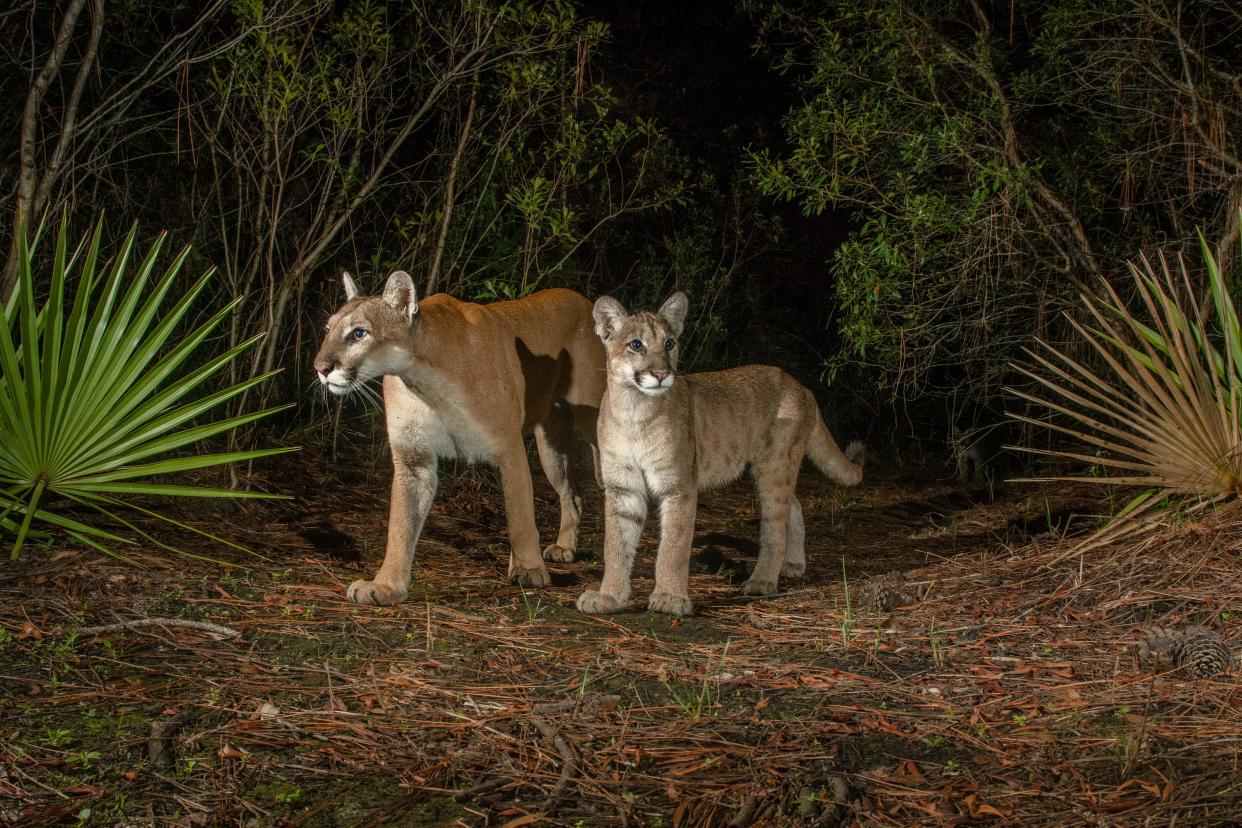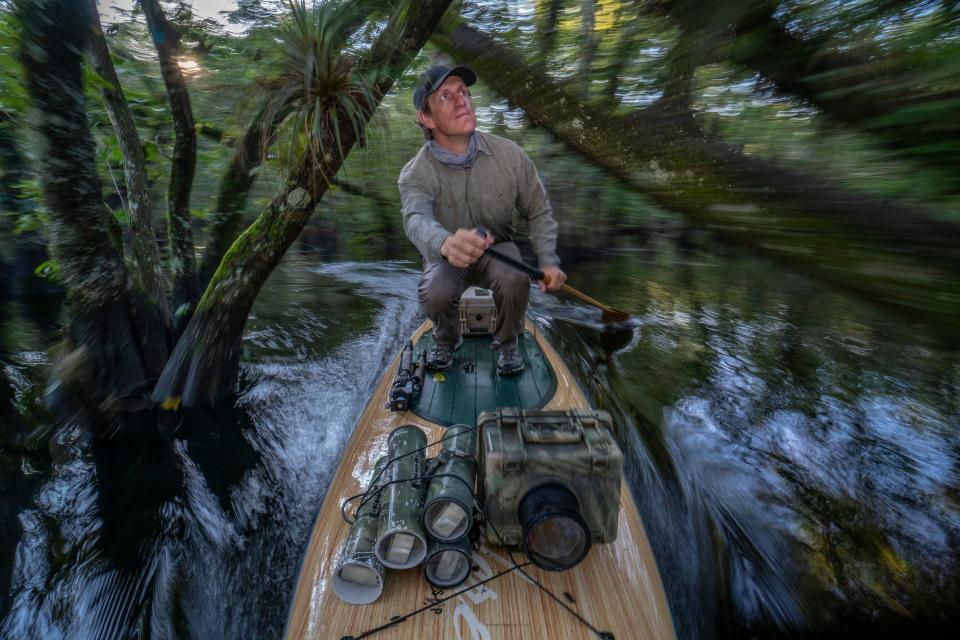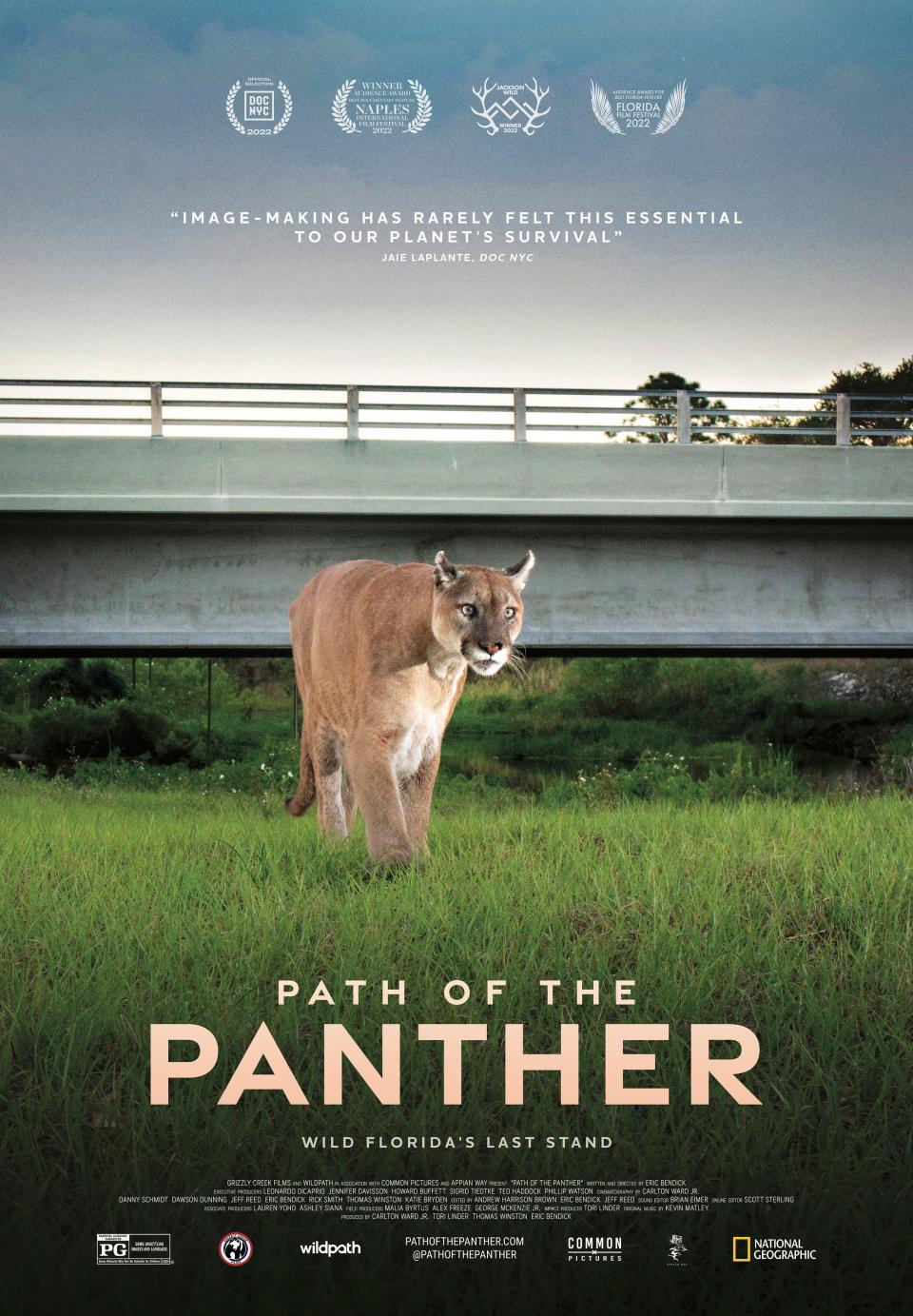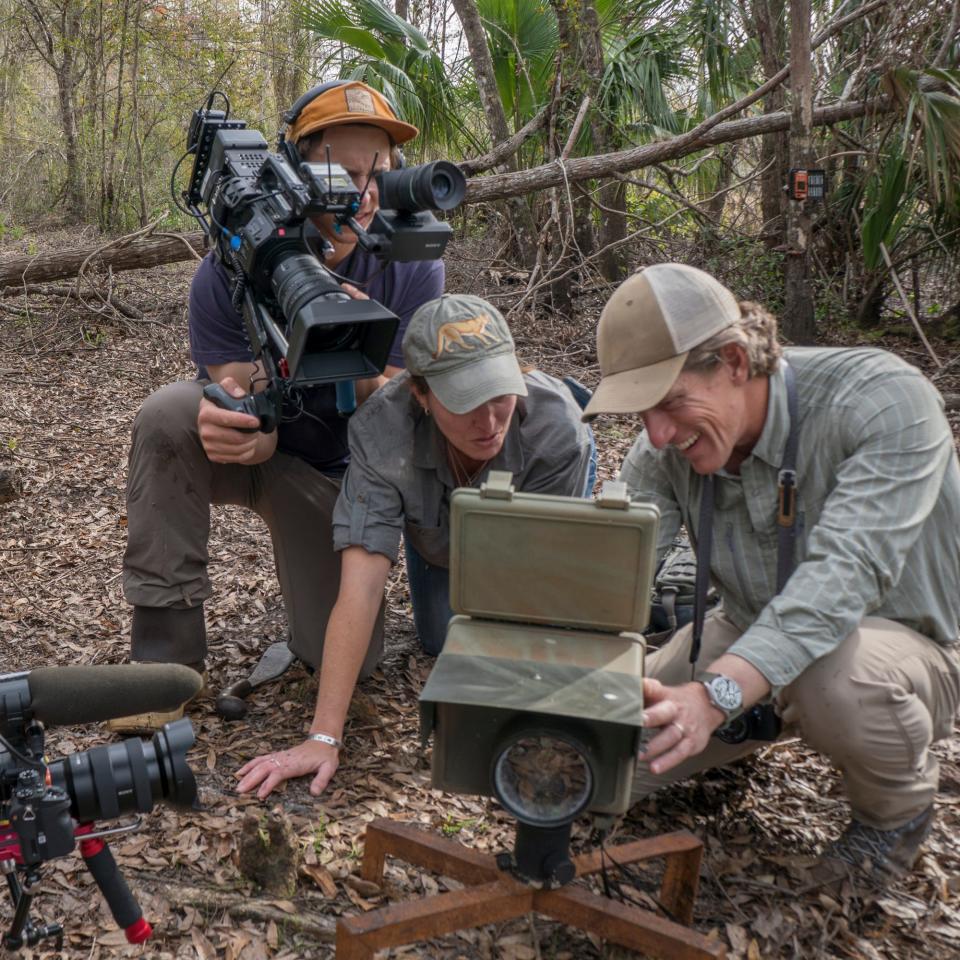Filmmakers to discuss panther documentary following screening in Lakeland's Polk Theatre

Most Floridians will never see a Florida panther in the wild, even lifelong residents who venture deep into the woods.
Starting Saturday, moviegoers will have three chances to observe the elusive and endangered predators in their natural habitat, captured in high-definition splendor. “Path of the Panther,” a documentary replete with footage of the big cats, opens a three-day run at the Polk Theatre with a screening to be followed by a panel discussion including two of the filmmakers.
A team that includes renowned Florida nature photographer Carlton Ward Jr. spent years pursuing panthers in Florida's most forbidding landscapes to produce the 89-minute film, a National Geographic Documentary with Leonardo DiCaprio as executive producer.
“I think people are in for a treat, in terms of seeing a larger-than-life view of Florida that they might not ordinarily ever encounter,” said Eric Bendick, the film’s writer, director and producer. “It is a chance to see how rich and beautiful and really wild our backyard is in Florida, and a chance to understand why it's so important to preserve that landscape so unique among anywhere on Earth.”
Growth: Developer and residents make cases for and against Creek Ranch development on Hatchineha Road
Also: Wildlife crossing in Polk County will be 1st for I-4 between Tampa, Orlando
Bendick and Ward will join Adam Bass of Conservation Florida for a panel discussion after Saturday’s 7:30 p.m. screening. The Polk Theatre will also show the movie Sunday at 2 p.m. and Monday at 6:30 p.m.
“Path of the Panther” opened in limited theatrical release on Feb. 24. By a coincidence of scheduling, Saturday’s first showing in Polk County occurs on the state’s officially designated Save the Florida Panther Day.
Florida panthers, the only surviving species of large cats east of the Mississippi River, have rebounded from near extinction but still number only between 120 and 230, according to the Florida Fish and Wildlife Conservation Commission (FWC).

Though mostly confined to a swampy expanse in southern Florida, panthers sometimes venture as far north as Polk County. The FWC has documented several sights over the past decade, and the remains of a 2½-year-old male panther were found last year along the Polk Parkway near Auburndale.
The movie promotes the concept of the Florida Wildlife Corridor, recognizing the need for contiguous wilderness areas stretching throughout the state’s peninsula. Ward participated in a four-person expedition in 2012, covering roughly 1,000 miles on a meandering route from the state’s southern tip to the Georgia border, a trek that led to the creation of the Florida Wildlife Corridor Foundation.
The Florida Legislature has acknowledged the concept by allotting money for habitat protection.
Bendick directed the four-part TV series “Epic Yellowstone” and is at work on a series about national parks for National Geographic. He joined Ward and others for a 2015 expedition that yielded “The Forgotten Coast,” a documentary that ran on PBS stations.
More:Florida panther dies on Polk Parkway near US 92 in Auburndale
Soon after that, Ward pitched the idea of a package about the Florida Wildlife Corridor to National Geographic, and an editor suggested that he concentrate on Florida panthers. Using the first of three National Geographic grants, Ward began installing still cameras in South Florida to capture images of panthers, using a device that triggered the camera when an animal crossed a laser beam.
“Right when that photo project began to take off, and then at the same time, we decided, ‘Wow, if we can photograph these animals, we can also film them,’” Bendick said. “And so, that was a major turning point for the project.”

Another impetus came in 2016, when biologists detected a female panther north of the Caloosahatchee River for the first time in more than 40 years. Bendick described the panther, nicknamed Babs, as “a real pioneer.”
FWC scientists allowed Ward, an eighth-generation Floridian, to place trip cameras in areas where the panther was roaming.
The project gained new urgency with the 2019 passage of legislation directing the Florida Department of Transportation to begin planning for three toll roads covering a combined 330 miles through mostly rural areas — including an expressway from the Lakeland area to Naples.
Though the Legislature scrapped those plans in 2021 amid concerns about funding, the proposals illustrated the ongoing threat of development throughout the Florida Wildlife Corridor, including sections of Polk County.
“And that's kind of when we decided this needed to be a feature documentary, where we could maintain the strong conservation storylines,” Ward said. “We kind of just kept following the story from there. So, in a lot of ways, the panther led us through the various stages of the project into its current form.”
Progressing from the original still cameras, Ward and the team placed high-definition video cameras along routes that he and biologists had determined the panthers traveled.

“The fascinating thing about these cameras is the panther takes its own photo,” Bendick said. “The panther crosses a beam on the trail, and then the camera turns on ahead of when it will walk through. So what you realize when you see the footage is that the images are of wildlife, not just panthers but all kinds of wildlife, behaving in a way that we almost never see them because there was no human that was altering their behavior.”
While the wildlife scenes are the film’s main draw, Bendick included interviews with such Floridians as Betty Osceola, a Miccosukee Everglades educator and conservationist, and Elton Langford, a DeSoto County cattle rancher. The director said the pair provided a sense of how the customs and livelihoods of humans depend on the same natural lands the panthers need for continued survival.
Ward said the panther serves as a symbol for the Florida Wildlife Corridor, a concept that he said has relevance far beyond the Sunshine State.
“Despite the population growth (in Florida) and the 1,000 people moving here a day, we still have the Florida panther, the last big cat east of the Mississippi River, and a connected wildlife corridor that represents nearly half the state that we still have a chance to protect for future generations,” Ward said. “And that, to me, is really exciting. Because if we can do it here, we can set a global example. We can balance the ecology and the economy for the rest of the planet.”
“Path of the Panther” will air later this year on the National Geographic channel and stream on Disney+. But the filmmakers say it is best seen in a theater on a large screen.
Leslie Sikora, executive director of the Polk Theatre, said she received requests from patrons to screen the documentary.
“I think it's important for people to take that journey, to see what's going on with the Florida Wildlife Corridor, if you will, just to see how vulnerable wildlife is and the need for more land conservation,” Sikora said. “I think it's an important message to tell because the Florida panther is unique to Florida, so we need to kind of bring it to everybody's attention, I think, if we can.”
Gary White can be reached at gary.white@theledger.com or 863-802-7518. Follow on Twitter @garywhite13.
This article originally appeared on The Ledger: Filmmakers to discuss panther documentary at screening in Lakeland

